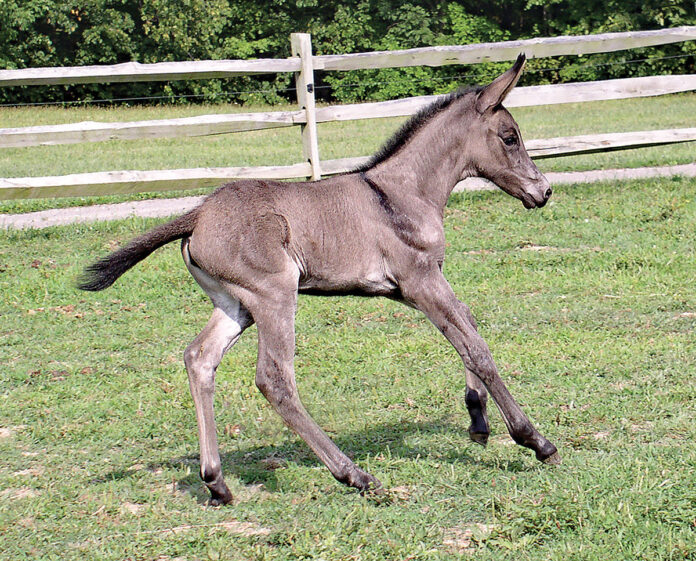Most dictionaries define hybrid as an offspring of two plants or animals of different varieties, breeds, genera or species through sexual reproduction. Although hybrids can and do occur naturally, human intervention has played a role in creating a host of organisms that are more aesthetically or economically important. These entities display hybrid vigor, a phenomenon distinguished by superior characteristics far surpassing that of either parent.
Nowhere is this more common than in agriculture. Hybridization of crops such as corn, wheat or alfalfa results in qualities such as improved tolerance to drought, quicker maturity and higher yields. This concept has also been applied to the production of commercial livestock including cattle, swine and poultry. Even American chestnut trees — the majority of which succumbed to the chestnut blight by 1950 — are being successfully crossed with Chinese chestnuts resulting in hybrids carrying the vigor to harbor blight resistance. This process of hybridization is biologically important because it augments the genetic variety necessary for evolution.
I, too, have contributed to creating a hybrid that is near and dear to my heart. Having ridden horses from a very early age I was anxious to start a horse farm shortly after finishing college. Along with my husband, Phil, also an avid horseman, we built our farm and began breeding quarter horses, buckskin in color, and standing our own stallion. But after a few years, Phil couldn’t shake his nagging interest in mules. So, in 2003 we sold our stallion and embarked on an unforgettable venture with our band of broodmares. Breeding them, via artificial insemination, to one of the premier donkey jacks in the country, we began our journey into the world of mules.
Mules

Mules have been utilized worldwide throughout history. From numerous biblical references to their many roles in military action (the mule is the symbol of the U.S. Army), use in mining operations and for building roads and canals, the mule was perhaps one of the most important animals in history.
The mule is a cross between a male donkey, known as a jack, and a female horse, known as a mare. It is interesting to note that this precise combination between the sexes of these species must be as such, for to cross a female donkey, known as a jennet, and a male horse, a stallion, would result in something known as a hinny. The characteristics of mules and hinnies are quite different, as the mule inherits more donkey-like characteristics, while the hinny is more horsey. When referencing mules, a female is referred to as a molly and a male is a john.

Anatomically, the mule has its own unique set of characteristics which causes it to differ from both donkey and horse. It has a flat top-line, straight neck, angular hip and narrow chest. Its non-prominent withers make it difficult to hold a saddle. It also treads on small, dainty hooves. Yet, the mule’s crowning glory lies in its hybrid vigor. Mules are incredibly intelligent. They never forget. And because of these two traits, they should never, ever be handled unfairly since they are also unforgiving. Because of their dense muscle mass, their strength is uncanny. They are also physically larger, typically, becoming taller than either parent. They have strong hooves and are an all-around healthier animal, only showing signs of being sick or in pain when they can barely tolerate it any longer — a nod to their toughness. They are also long-lived with many a documented mule living to the ripe old age of 50. Because of this incredible longevity, mules mature slowly, not reaching a mental maturity until at least the age of 10.
This hybrid vigor became apparent to us the moment our foals emerged from their mothers’ wombs. After almost every birth, the foal would jump up within minutes circling its exhausted mother as if to say “Get up, get up, get up! I’m hungry!” The foals had endless energy and determination and it became obvious to us that although their mothers loved them dearly, they became quite drained and sometimes frustrated from putting up with their youngsters’ antics.

There is much truth to the popular saying, “stubborn as a mule”. Yes, mules can be incredibly stubborn, but there is good reason for that. When a mule becomes belligerent, it is because his intelligent, resourceful brain is coming into play. First of all, if a mule feels it is being treated unfairly or overworked, it will simply stop performing. Furthermore, if you put a mule into a situation that causes it to feel unsafe, such as crossing a rickety bridge while trail riding, it will refuse to proceed. You see, mules are all about self-preservation and it is this trait that has saved many a rider from trouble. Is it any wonder that mules have been the chosen mounts for taking people down into the Grand Canyon since 1891?
If there is one aspect of mules where their vigor falters, it is that they are sterile. When donkeys and horses get together, their chromosomes don’t quite match up. Donkeys have 31 pairs of chromosomes and horses have 32 pairs. The resulting combination from both parents results in an uneven number, 31 ½ pairs. In a nutshell, this leaves the mule with an extra chromosome that wreaks havoc on their fertility. As with anything else, however, there are always exceptions to the rule, and there have been a handful of rare documented cases throughout history of mules giving birth.

Breeding mules
Donkeys come in a variety of sizes from miniature, several sizes of standard, up to the largest, referred to as mammoths. Horses come in a plethora of breeds. Selecting your mule’s parents will result in a custom-made mule. Mules are extremely versatile and can perform almost any discipline. There are mini mules, racing mules, dressage mules, gaited mules, jumping mules, roping mules, draft mules, etc. Mules can also sport any color including gray, palomino, buckskin, roan, grullo, spotted and paints. When breeding for mules at our farm, we crossed our registered foundation quarter horse mares with mammoth jacks. The results were tall, stout mules that made excellent trail mounts.

Phil didn’t want to wait for our first mule foal to be born. As soon as we made the decision to transition our program, he immediately purchased his very first mule, a yearling from a farm in Iowa. Simon, a stunning grullo with primitive markings known as dun factor, became the apple of his eye upon arrival and the two of them have formed an envious, inseparable bond having traversed hundreds of miles of trails and spent many a night camping together beneath the stars. Today, Simon is still going strong as a middle-aged mule of 21. You see, mules are much like dogs when it comes to their affection and dedication to their person. Raising them with love, patience, sensitivity and respect is one of the most rewarding ventures, earning you a friend for life. If there is one thing that Phil and I wholeheartedly agree upon, it is the fact that when it comes to our equine mount, a mule will always be our first choice.















